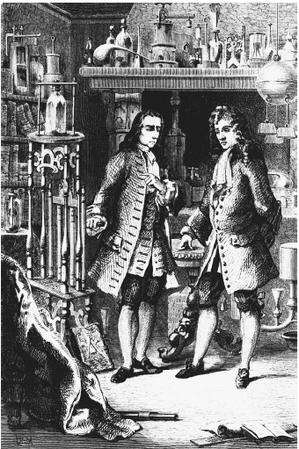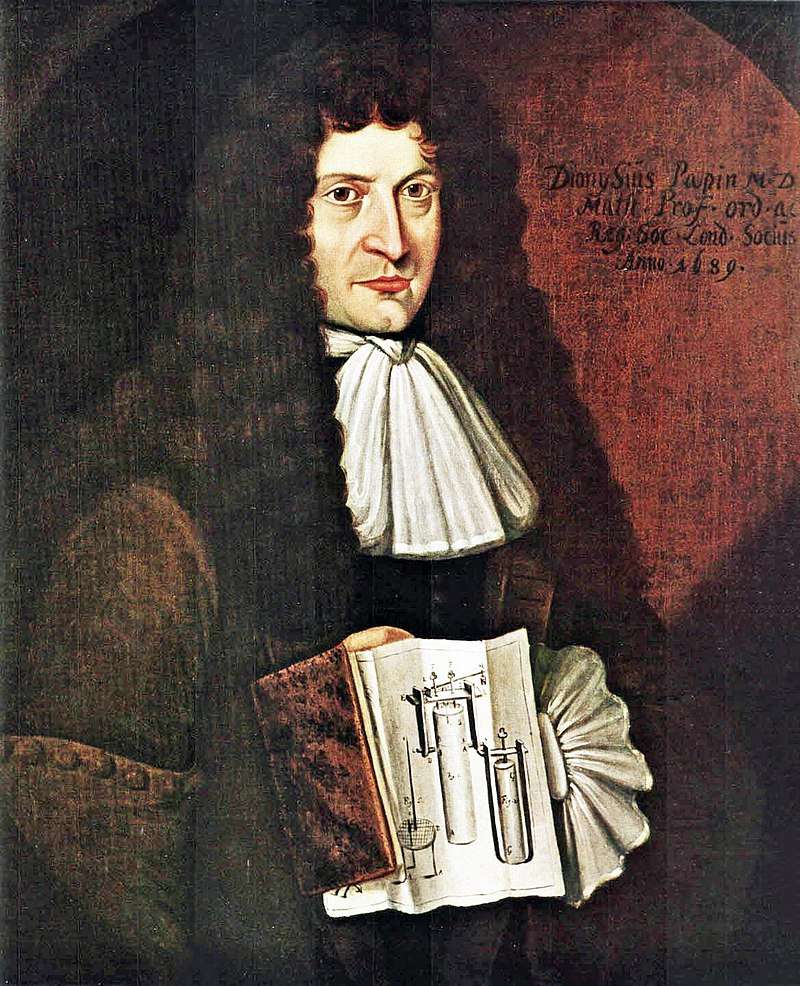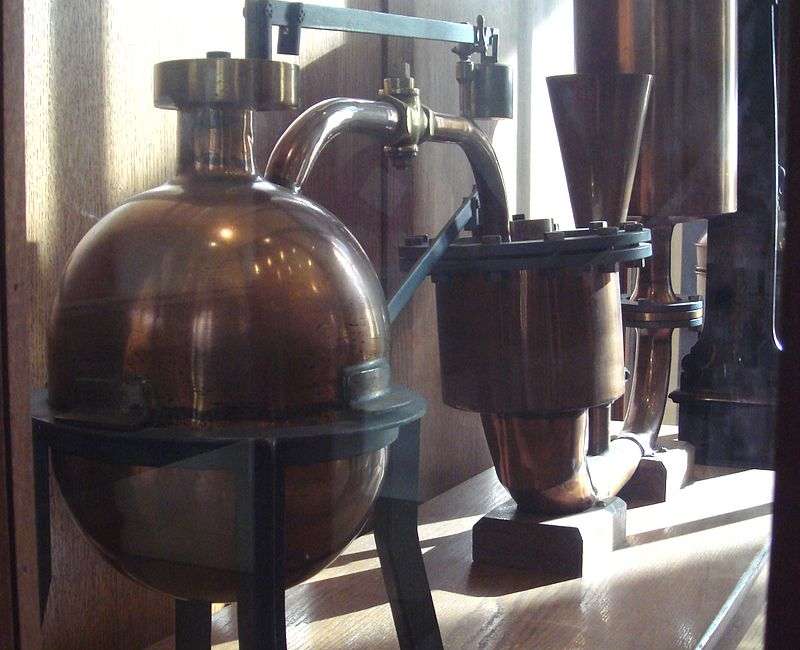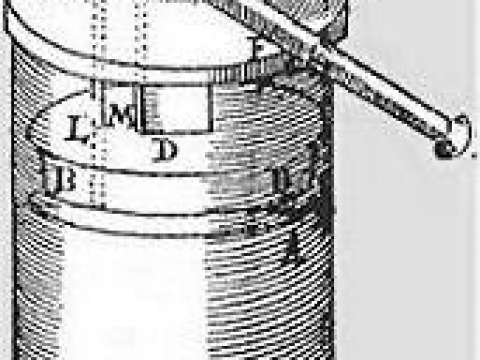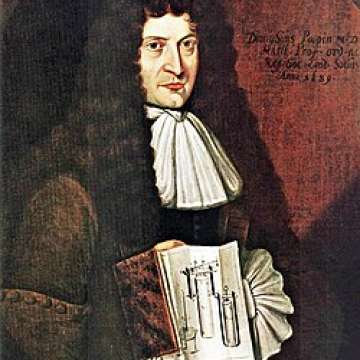

Denis Papin (1647-1713)
I have endeavoured to attain this end (viz. the production of a vacuum in the cylinder) in another way. As water has the property of elasticity, when converted into steam by heat, and afterwards of being so completely recondensed by cold, that there does not remain the least appearance of this elasticity, I have thought that it would not be difficult to work machines in which, by means of a moderate heat and at a small cost, water might produce that perfect vacuum which has vainly been sought by means of gunpowder.
Denis Papin was a French physicist, mathematician and inventor, best known for his pioneering invention of the steam digester, the forerunner of the pressure cooker and of the steam engine.
Life in France
Born in Chitenay Loir-et-Cher, Centre-Val de Loire Région, Papin attended a Jesuit school there, and from 1661 attended University at Angers, from which he graduated with a medical degree in 1669. In 1673, while working with Christiaan Huygens and Gottfried Leibniz in Paris, he became interested in using a vacuum to generate motive power.
First visit to London
Papin first visited London in 1675, and worked with Robert Boyle from 1676 to 1679, publishing an account of his work in Continuation of New Experiments 1680. During this period, Papin invented the steam digester, a type of pressure cooker with a safety valve. He first addressed the Royal Society in 1679 on the subject of his digester, and remained mostly in London until about 1687, when he left to take up an academic post in Germany.
Denis Papin's steam digester 1679 A "Papin" cooking pot, late 18th century
Germany
As a Huguenot, Papin found himself greatly affected by the increasing restrictions placed on Protestants by Louis XIV of France and by the King's ultimate revocation of the Edict of Nantes in 1685. In Germany he was able to live with fellow Huguenot exiles from France.
In 1689, Papin suggested that a force pump or bellows could maintain the pressure and fresh air inside a diving bell. Engineer John Smeaton utilised this design in 1789.

While in Marburg in 1690, having observed the mechanical power of atmospheric pressure on his 'digester', Papin built a model of a piston steam engine, the first of its kind. In 1705 while teaching mathematics at the University of Marburg, he developed a second steam engine with the help of Gottfried Leibniz, based on an invention by Thomas Savery, but this used steam pressure rather than atmospheric pressure. Details of the engine were published in 1707.
In 1705, he constructed a ship powered by his steam engine, mechanically linked to paddles. This made him the first to construct a steam-powered boat or vehicle of any kind. He decided to steam the boat down the river Fulda to the river Weser. Any boat making this trip was forced to stop at the city of Münden. At that time, river traffic on the Fulda and Weser was the monopoly of a guild of boatmen. Guild members did not want competition from Papin's steamboat and smashed it with his steam engine to pieces.
Later, at the iron foundry in Veckerhagen now Reinhardshagen, he cast the world's first steam cylinder.
Return to London
Papin returned to London in 1707, leaving his wife in Germany. Several of his papers were put before the Royal Society between 1707 and 1712 without acknowledging or paying him, about which he complained bitterly. Papin's ideas included a description of his 1690 atmospheric steam engine, similar to that built and put into use by Thomas Newcomen in 1712, thought to be the year of Papin's death.
The last surviving evidence of Papin's whereabouts came in a letter he wrote dated 23 January 1712. At the time he was destitute "I am in a sad case" , and it is believed he died that year and was buried in an unmarked grave in London.

A record exists for the burial of a “Denys Papin” in an 18th-century Register of Marriages & Burials which originally came from St Bride's Church, Fleet Street, London, but which is now stored in the London Metropolitan Archives. The record states that Denys Papin was buried at St Bride's on 26 August 1713 – just a few days after his 66th birthday – and that he was laid to rest in the Lower Ground, one of the two burial areas belonging to the church at the time.
Robert Boyle and Denis Papin inspecting Papin's digester Second Papin steam engine, 1707 Steam-driven water-lifting machine by Papin in 1707, reconstruction, from Nouvelle manière d'élever l'eau par la force du feu. Musée des Arts et Métiers The Register from St Bride's Church showing the date of Papin's burial
Legacy
Boulevard Denis Papin in Carcassonne is named after him as well as a street in Saint-Michel, Montreal. There is also a statue of Papin with his invention in Blois, at the top of the Escalier Denis Papin, a stairway.
Works
- Nouvelle manière pour lever l'eau par la force du feu ... par m. D. Papin. A Cassel: pour Jacob Estienne libraire de la cour : par Jean Gaspard Voguel imprimeur. 1707
- Nouvelle manière pour lever l'eau par la force du feu 1707

